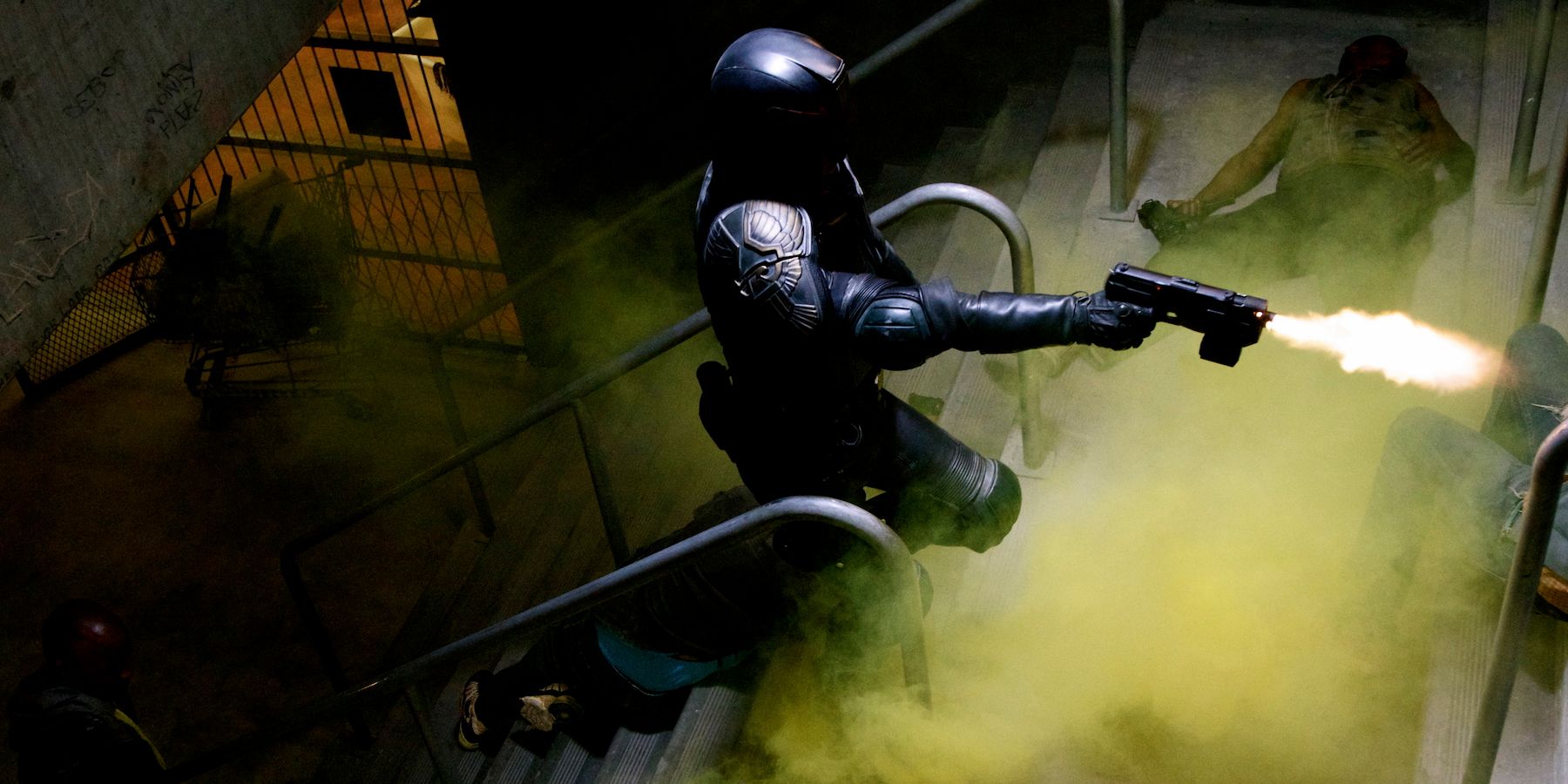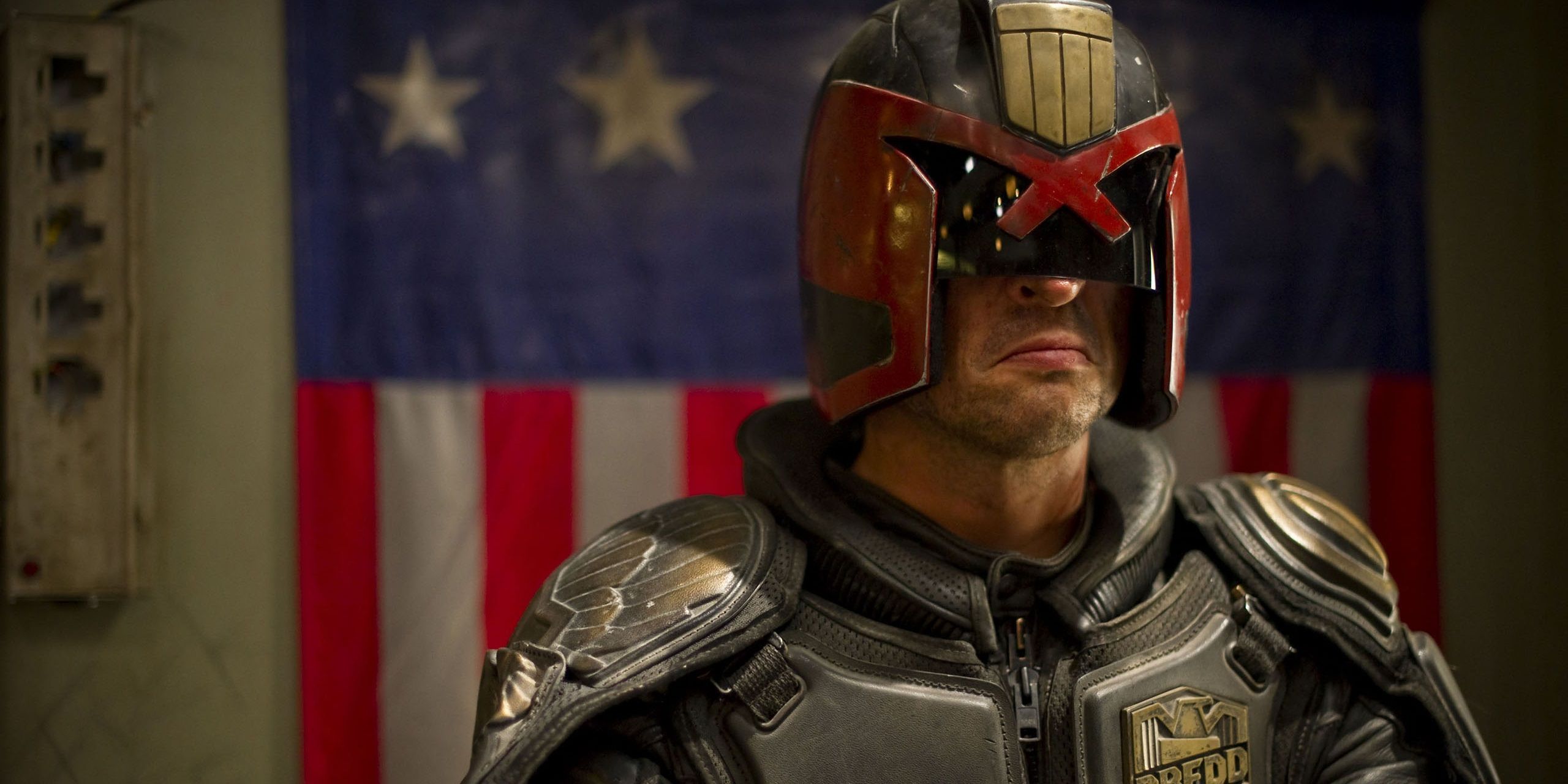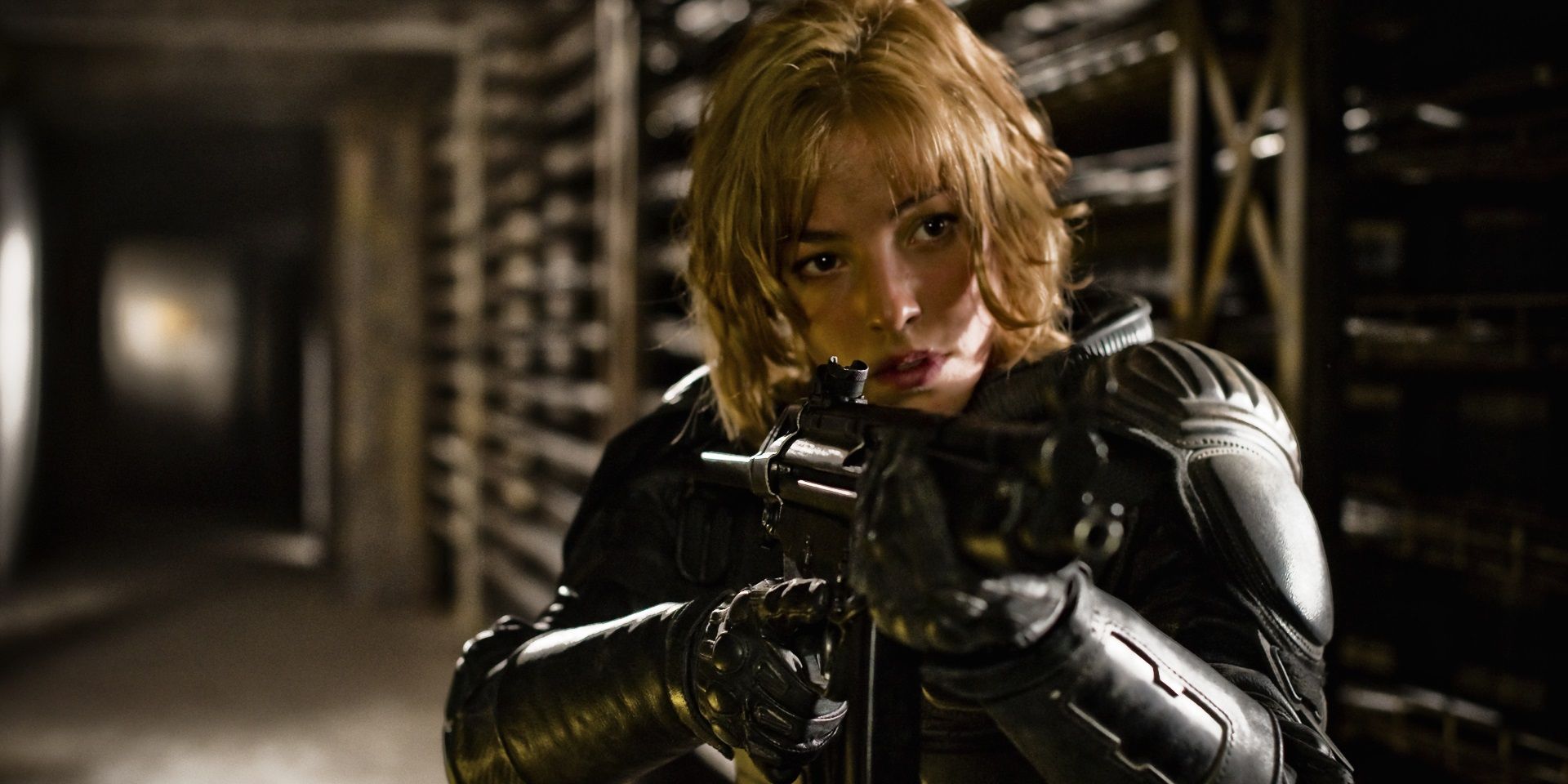The Most Underrated Comic Book Movie Is A Bloody Action Spectacle

Back in 2012, after a nightmarish production necessitating a litany of delays and reshoots, Dredd finally made it to screens across the world. And thanks to a half-hearted marketing campaign by the studio, it failed to make a splash at the box office and its planned sequels were called off. That’s a real shame, because it’s one of the greatest comic book movies ever made, and in a world that carries well-made comic book movies around on its shoulders, it’s massively underappreciated.
It’s a great fast-paced sci-fi actioner for viewers who aren’t interested in the comics, but it’s also a faithful adaptation of the source material for those who are (although it’s hardly underappreciated within the Judge Dredd fan base). Judge Dredd had previously been brought to the screen in the ‘90s with Sylvester Stallone in the role, but that movie was completely disingenuous to the character. He took his helmet off constantly (the 2014 RoboCop remake would later make the same mistake), he was watered down to be a more likable Hollywood hero, and the whole thing was framed as a buddy movie with Rob Schneider of all people as Dredd’s comic foil.
The credited director of Dredd is Pete Travis, but according to Karl Urban, screenwriter Alex Garland directed so much of the movie’s reshoots (which made up a lot of the final cut) that it’s basically his directorial debut. (Officially, his directorial debut is the masterfully crafted sci-fi thriller Ex Machina.) Unlike Stallone, Garland had a satisfying take on the themes and lore and tone of Judge Dredd stories – and the freedom to go hard-R with the satirical violence. Plus, in Dredd, the character never removes his helmet.

Casting is crucial in any comic book adaptation – a woefully miscast role like Topher Grace as Venom or Ben Affleck as Daredevil can ruin a movie – and thankfully, Dredd has a terrific roster of acting talent. Karl Urban was perfectly cast as Dredd, embodying the iconic judge’s gruff exterior and even showing glimpses of vulnerability under the surface. Olivia Thirlby made a great foil as the telepathic Judge Anderson. Lena Headey gives an unforgettable turn as the movie’s villain, a sadistic crime boss, and The Wire’s Wood Harris provides strong support as a gangster who tries to get inside Anderson’s head.
Most superhero comic adaptations – at least the first in a franchise (or the first in a rebooted version of an existing franchise) – tell the character’s origin story, setting up sequels that will be able to jump into the action from the offset. The familiar beats of the well-worn superhero origin story have held back movies like Doctor Strange and The Amazing Spider-Man, which both fell into the rigid, generic trappings of origin movies. Garland recognized that the backstory of Judge Dredd’s stories isn’t nearly as important as their themes. He skipped the judge’s origin story and focused on his mythos’ pointed satire of fascism and authoritarianism. Dredd tells a self-contained story with wall-to-wall action, focusing on the character himself and the world he lives in rather than his backstory, which is incidental.
The plot of Dredd is often compared to The Raid. Although The Raid made it to theaters first, Dredd took so long to produce that it was in development earlier than The Raid, so the similarities are just a coincidence. Judges Dredd and Anderson find themselves locked in a 200-story high-rise in the middle of a dystopian megalopolis and have to fight through legions of henchmen working for the drug lord that controls the building in order to bring down her criminal empire. This setup allows action to drive the plot, unfettered by the incessant worldbuilding and exposition found in most other comic book movies.

Slo-Mo, the fictional drug that Dredd is hoping to take off the market, paves the way for some gorgeous visuals. It slows down its users’ conception of time, which is used to facilitate disturbing, mesmerizing imagery of horrific acts of ultraviolence in super slow-motion with the color saturation dialed up. Gangsters give this drug to their enemies before throwing them from the top of the high-rise to their deaths. Unencumbered by the trappings of the PG-13 rating, Dredd skirts closer to the NC-17 side of the R rating than Logan, Joker, or even the “Ultimate Edition” of Batman v Superman. Bullets tear through human flesh and bodies hurtle toward the ground from a great height in haunting detail. It’s thanks to this drug that the villain meets a grisly, visually stunning end in the big finale.
After going uncredited for his directorial work on Dredd, Garland has gone on to receive credits for his work on Ex Machina and Annihilation, both of which have been lauded by critics and ranked among the greatest sci-fi movies of the decade. It’s about time his comic book-based unofficial debut feature got the recognition it deserves.

Post a Comment